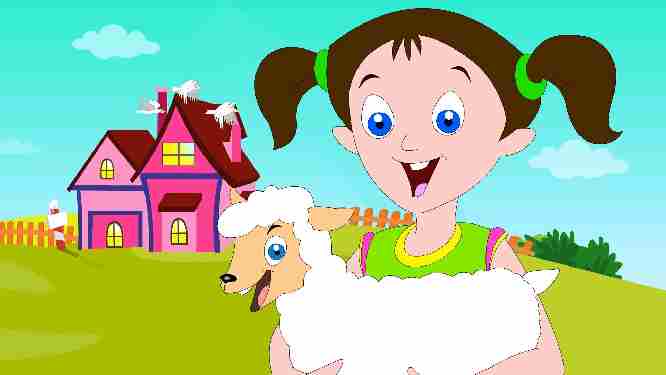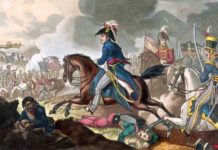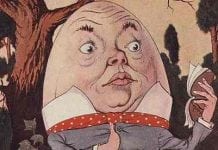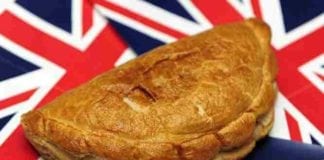Mary had a little lamb,
Its fleece was white as snow;
And everywhere that Mary went,
The lamb was sure to go.
It followed her to school one day,
Which was against the rule;
It made the children laugh and play
To see a lamb at school.
And so the teacher turned it out,
But still it lingered near,
And waited patiently about,
Till Mary did appear.
Why does the lamb love Mary so?
The eager children cry;
Why Mary loves the lamb, you know,
The teacher did reply.
The imagery and names used in this poem point to its having been constructed as a Christian homily for children.
Such rhymes were extremely popular in the eighteenth and nineteenth centuries, so popular, in fact, that William Blake used the form as a template for his famous Songs of Innocence and Experience, published in 1794 (think of ‘Little Lamb, who made thee’ and ‘Tiger, tiger, burning bright’).
Mary, of course, is the name of Christ’s mother and one of the most commonly used images for Jesus is that of the Lamb of God, the fleece as white as snow a symbol of his goodness and purity.
The poem can be read as a parable of Christ’s enduring love for mankind (Why does the lamb love Mary so?), that he is with Christians everywhere.
(And everywhere that Mary went, / The lamb was sure to go) and that the true Christian should love God and ignore other people’s mockery (It made the children laugh and play).
In the style of these homilies, the teacher would have used Mary’s story explicitly to draw this improving moral, spelt out in the final verse.
To see how the poem came about, we need to go back to the early nineteenth century. It was reported in a 1902 edition of the New York Times Book Review that when Dr Lowell Mason introduced singing into Boston schools in 1827 he asked noted writers to contribute songs and rhymes, and one of the contributors was Sarah Josepha Hale (1788–1879), who supplied ‘Mary Had a Little Lamb’.
The rhyme proved so popular that many found it hard to believe that it wasn’t based on a true incident; indeed Mrs Hale had hinted as much. When in 1913 the New York Times ran an interview with Richard K. Powers of Lancaster, Massachusetts, who was celebrating his one hundred and eighth birthday, he talked about ‘Mary had a Little Lamb’ and commented:
‘Mary was my cousin, her full name was Mary Elizabeth Sawyer.’ Very conveniently, Mary Sawyer had written a complete account, at the age of eighty-eight. Here’s her story, in her own words – I’ve done a little pruning to keep her to the point because, as you’ll see, she’s not one for saying things briefly:
One cold, bleak March morning, I went out with father to the barn and found a lamb that had been born in the night. It had been forsaken by its mother and through neglect was about dead from the cold and for want of food. I saw it had a little life and wanted to take it into the house, but father said no as it was about dead anyway and could only live for a short time. But I could not bear to see the poor little thing suffer so, and I teased until I got it into the house and then worked on mother’s sympathy.
At first it could not swallow, and the catnip tea I had mother make, it could not take for a long time. I got the lamb warm first thing, which was done by wrapping her in an old garment and holding her in my arms beside the fireplace. All night long I nursed the lamb and at night it could swallow just a little.
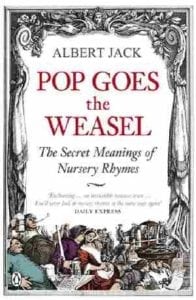
In the morning, much to my girlish delight, it could stand and then improved rapidly. It soon learned to drink milk, and from the time it could walk about it would follow me anywhere if I called it. It was a fast grower, as symmetrical a sheep who ever walked and its fleece was of the finest and whitest. Why, I used to take as much care of it as a mother would of a child. I used to wash it regularly, keep the burdocks out of its feet and comb and trim with bright coloured ribbons the wool on its forehead. And when that was being done, the lamb would hold down its head, shut its eyes and wait as patiently as could be.
Then my brother Nate said: ‘Let’s take the lamb to school with us.’ When the schoolhouse was reached, the teacher had not arrived but a few scholars were there. I took her down to my seat – you know we had the old-fashioned, high-boarded seats back then. Well, I put the lamb under the seat on a blanket and she lay down just as quietly as could be.
By and by, I had to get up to recite and left the lamb all right, but in a minute there was a clatter, clatter on the floor and I knew it was the pattering of the hooves of my lamb. Oh, how mortified I felt. The teacher laughed outright and of course all the children giggled. It was rare sport for them but I couldn’t find anything mirthful in the situation. I was too embarrassed and ashamed to even laugh or smile. I took the lamb out and put it in the shed until I was ready to go home at noon, when it followed me back.
Visiting the school that forenoon was a young man called John Roulstone. He was very pleased at the school incident and the next day he rode across the fields on horseback, came to the little old schoolhouse and handed me a slip of paper which had written on it three verses, which are the original lines, but since then there have been other verses added by a Mrs Townsend.
Personally, I have a few doubts. In the first place, if the lamb was so special to Mary, why didn’t it have a name? And if it did have a name, why didn’t she use it, or how had she forgotten it and yet remembered so many other small details so many years afterwards?
Also, the rhyme was not published until 1830, fourteen years later. Would you still remember something a passing nine-year-old had written about your pet all those years ago?
While there may be some dispute about whether Roulstone wrote any part of the poem, or whether Sarah Hale composed the whole thing, Massachusetts has nonetheless claimed the rhyme (and the consequent increase in their tourist industry), and both Mary Sawyer’s house in Sterling (until it burned down in 2007) and the small Redstone School have been preserved as a memorial.
Today, in Sterling town centre, there stands a statue of a lamb in tribute to John Roulstone and displaying the first verse of the poem. Incidentally, Mary Sawyer’s little lamb, a ewe, apparently lived to be four years old and had three of her own baby lambs.
Personally, I prefer this version of the rhyme:
Mary had a little lamb,
It really was a glutton;
It quickly grew into a sheep
And ended up as mutton.
Or this one:
Mary had a little lamb,
But then she had a hunch
When Dad came home with mint sauce,
They were having lamb for lunch.
– Albert Jack
Albert Jack AUDIOBOOKS available for download here

Pop Goes the Weasel – Nursery Rhyme History

